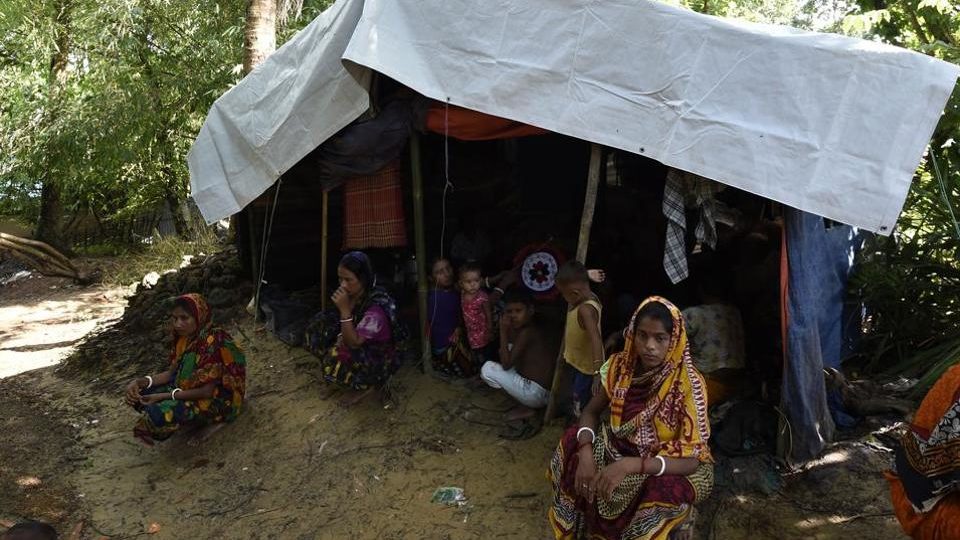by Claire COZENS
In a small village in southern Bangladesh, hundreds of Hindu refugees from neighboring Myanmar are being handed plates heaped with dal and rice, less than a mile from where desperate Muslim Rohingya beg for food and shelter.
The contrast captures the sharp religious and ethnic divides that have only deepened since a convulsion of violence in Myanmar’s Rakhine state unleashed a staggering refugee crisis.
The vast majority of those fleeing into Bangladesh are Rohingya Muslims, with more than 420,000 bolting from a campaign of violence that the United Nations has said amounts to “ethnic cleansing.”
Their arrival in less than a month has overwhelmed authorities and aid agencies, and many have received little or no official help since they arrived, leaving them without basic shelter, food and water.
A far smaller but still significant number of Buddhists and Hindus were also caught up in the communal violence, which erupted after Rohingya militants attacked police posts on August 25, triggering a ruthless military crackdown.
While most were displaced within Rakhine, an estimated 500 Hindus fled to Bangladesh, where they initially tried to find space in the overflowing camps dominated by Rohingya.
But communal tensions trailed them there, according to Hindu refugees who have since been given sanctuary by a local Hindu community nearby.
In the small Hindu village in Kutupalong they now call home, the refugees first described attacks on their homes in Rakhine that triggered their escape.
“They came in black and they covered their faces,” said Niranjan Rudro, 50, who worked as a barber in Myanmar.
“In my village there were 70 Hindu families. They surrounded us for three days and we couldn’t leave the house even to get food.”
Many of the refugees told similar stories, although all are impossible for AFP to verify.
Some said they believed their attackers were from the Arakan Rohingya Salvation Army (ARSA), the Rohingya militant group behind the ambushes on police posts.
Since the latest eruption of violence, Rakhine’s ethnic groups have traded rival accusations over who is to blame for the carnage, exacerbating long-running mistrust between the communities.
Rohingya refugees have blamed the army and ethnic Rakhine Buddhist mobs for killings and arson attacks that have ripped through their communities, turning hundreds of villages into piles of ash.
Buddhist and Hindu groups, meanwhile, say they were terrorized by Rohingya militants whose raids on police posts tipped the region into crisis.
According to the Hindu refugees, tensions spilled into violence even after they arrived in Bangladesh.
Some said they were ostracized and attacked at the nearby Kutupalong camp, where they initially tried to cram in among the hundreds of thousands of newly arrived Rohingya refugees.
Three young men showed AFP bruises and scars that they said were inflicted by the Rohingya refugees in Bangladesh.
Puja Mollick, 18, said she came to Bangladesh after losing her parents and husband in the violence in Rakhine.
When she arrived in Kutupalong, men tried to force her into marriage against her will until she was rescued by an uncle.
But she and others have now found safety in the Hindu village less than a mile from the Kutupalong camp.
Local families have taken in around 200, while another 300 are crammed into a basic shelter nearby.
All receive regular meals, paid for mainly by donations from local Hindus.
“We heard that Hindu people were here in Bangladesh, camping out in the forests. So we went to find them and brought them here,” community leader Shapon Sharma told AFP.
“We reached out to Hindu communities… all over Bangladesh to arrange for food and shelter for them.”





Reader Interactions